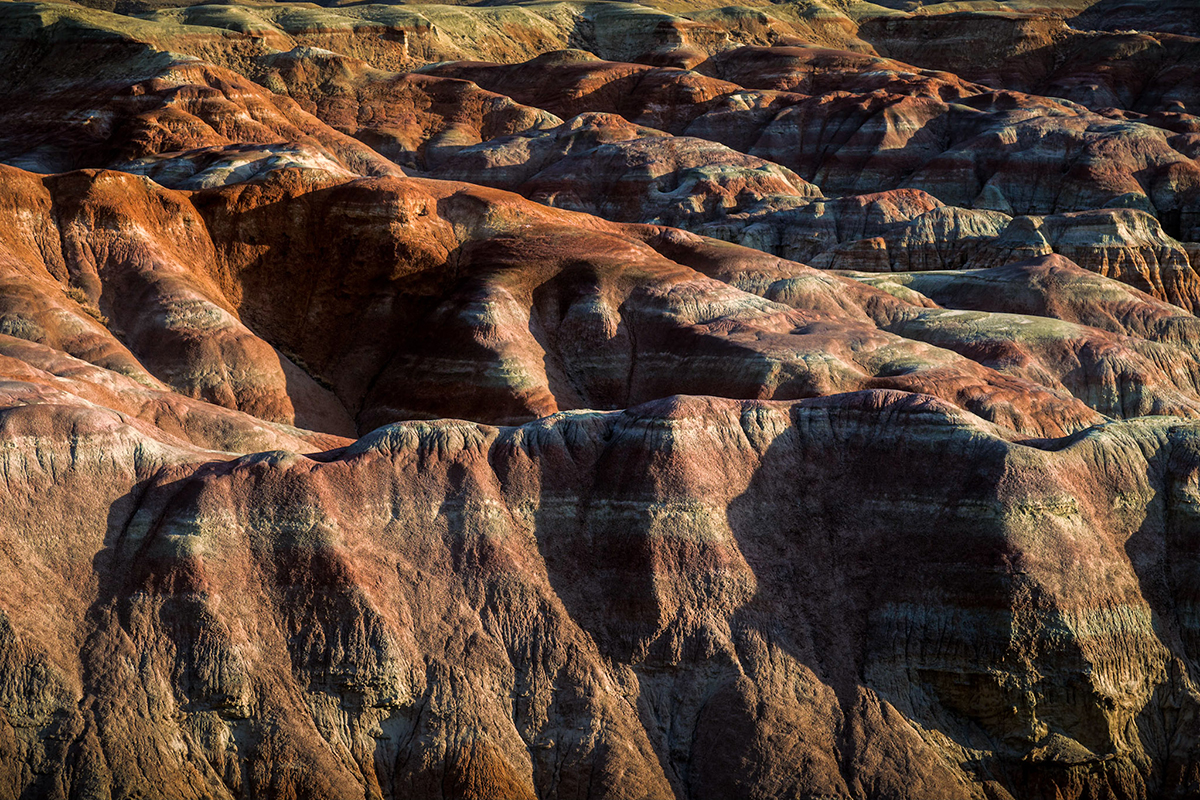Lenses for a Landscape Adventurer
Brandon Ward uses his Tamron 11-20mm F/2.8 and 17-70mm F/2.8 VC lenses to capture the essence of each outdoor exploration.
Share the article:
More Photo Tips | Video Gallery | Photo Gallery | Enewsletter sign-up
By Jenn Gidman
Images by Brandon Ward
After Brandon Ward graduated from high school, he embarked on a road trip across the United States to figure out where he wanted to next set down roots, and he settled on Jackson, Wyoming. A stint in the Army and other career opportunities translated to many moves around the country with his family over the past two decades, but Brandon has now turned up back in Wyoming, this time in Lander.
Brandon’s love of the outdoors—in his free time, he can usually be found whitewater rafting, camping, and hiking, among other recreational activities—has made landscape photography a natural draw, and Wyoming the ideal location. “It’s a diverse landscape with plenty of alpine, desert, and prairie scenery and an abundance of public lands to wander freely upon,” he says. “To keep things relaxed and my photography authentic, I like to think that the outdoor adventure is first, photography second. I find my images turn out better that way.”
During his explorations, Brandon uses the new Tamron 11-20mm F/2.8 RXD wide-angle and 17-70mm F/2.8 VC RXD lenses for his Sony mirrorless camera system. “These lenses have completely changed photography for me,” he says. “I started taking pictures on film back in the mid-‘90s but never really stuck with it. When the opportunity came to get back into photography, I wanted the newest tech that had foreseeable growth, and that’s mirrorless. I could never really find the lenses I needed, though. I’d carry a few primes and a midrange telephoto with me, even though they took up a lot of space and added too much weight for some of my more adventurous outings. The 11-20 and 17-70 have put an end to my search. The F/2.8 maximum aperture of both lenses is a big selling point for me, and the focal range of these two when paired is perfect for what I do. Plus, the image quality is hands down the best I’ve ever experienced.”
Brandon seeks out landscapes that are overlooked, off the beaten path, or under threat from development. “I like to almost exclusively explore public lands,” he says. “I favor desert scenery and I try to relay my enthusiasm for the land I’m capturing through my images. The more I take pictures, the more I learn what I like and don’t. As long as I focus on the photo, stay invested in growing as a photographer, and keep the passion real for my subjects, I feel the viewer will take away that passion as intended.”
Looking for layers has become almost an obsession. “Layers of light and shadow, color, even the up and down of hills or mountains catches my eye,” he says. “Layers are everywhere in photography, and they draw me in every time. I’m particularly drawn to erosion layers, which are very prevalent in my part of Wyoming. Depth and texture are up there, too. I feel like I hit the lottery when I can incorporate all three in a scene.”
Read on to see how Brandon used the Tamron 11-20mm and 17-70mm lenses in his recent travels around Wyoming and neighboring Utah.
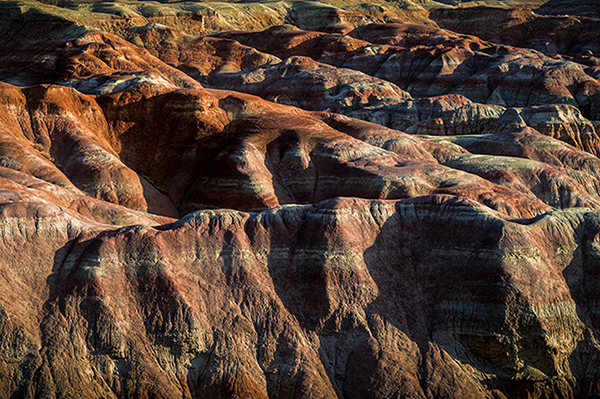
17-70mm (70mm), F/8, 1/50 sec. , ISO 100
Click image to view larger
San Rafael Swell region, Utah
Red Desert region, Honeycomb Buttes Wilderness Study Area, Wyoming
This shot turned out well, considering it was 18 degrees out with sustained 40mph winds. I was miserable, but I’d camped out there the night before so I could take advantage of the morning light. I wanted to capture only the layers of the colored ridges without the sky or foreground to distract the viewer.
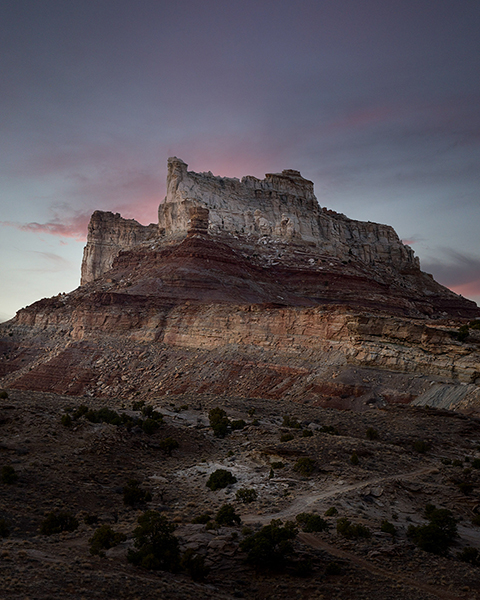
17-70mm (48mm), F/10, 1/25 sec. , ISO 400
Click image to view larger
San Rafael Swell region, Utah
This shows the view above my camp on my first night in the area. As the sun set and shadows increased, the layers of colors in the rock started to emerge in a visually appealing way. The surrounding skyline was busy and sort of crowded the frame, but after moving around a bit and finding a way to isolate the subject, I was able to pull it off.
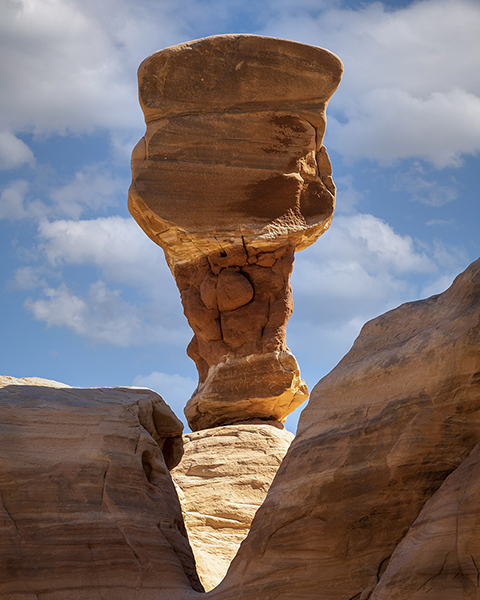
17-70mm (70mm), F/5.6, 1/640 sec. , ISO 160
Click image to view larger
Grand Staircase-Escalante, Utah
This was a midday handheld shot. I wanted a minimalist image, which worked out perfectly after I positioned myself in a way to get the subject fully in the frame with very few unnecessary distractions. I also like the foreground rocks that are shaded with the “V” notch, directing the eyes upward toward the subject and highlights.
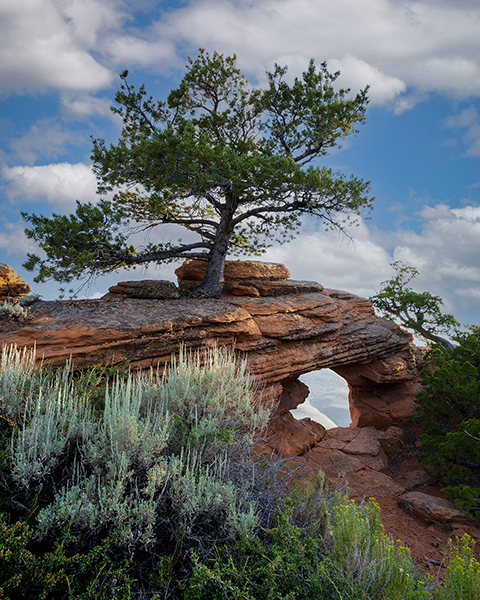
11-20mm (11mm), F/11, 1/25 sec. , ISO 100
Click image to view larger
Red Canyon area, Lander, Wyoming
This is one of my favorite spots for a day hike—I get both a great workout and photo opportunity. Here I was trying to capture both the tree and the arch in the same frame while including a pleasing foreground element: the sage brush. If I’d stood a few feet back, the hill would have dropped quickly, losing the arch; much closer, and the tree would have gotten cropped. The wide end of the 11-20 really shone here. I was just 20 feet from the rock at the base of the tree for perspective. Only a wide-angle lens like the 11-20 could work here.
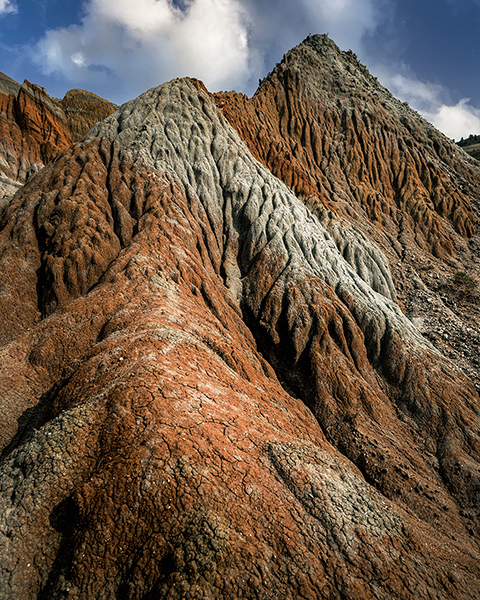
11-20mm (13mm), F/5.6, 1/400 sec. , ISO 100
Click image to view larger
Red Desert region, Whitehorse Creek Wilderness Study Area, Wyoming
I couldn’t resist this shot with its erosion, colors, and layers—all of my favorite things in one scene. It’s definitely one of my favorite shots with the 11-20mm lens. Shooting on the wide end and fairly close, the lens picked up the detail in the almost rocklike dirt landscape (I often call these mud dunes). The subtle diagonal line drifts upward from the right, pulling the eye in and up through the texture of the eroded layers of dirt.
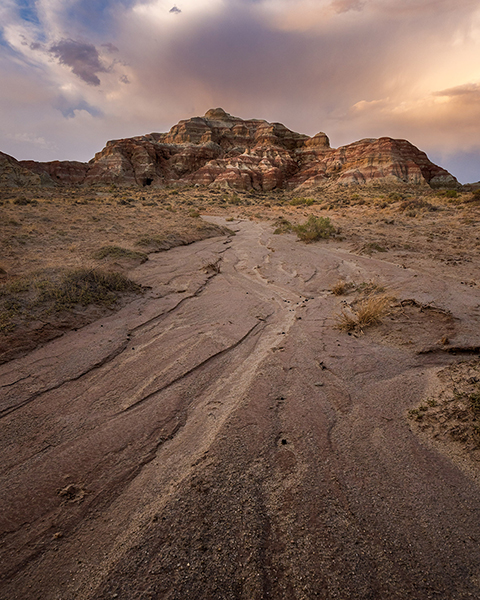
11-20mm (11mm), F/5.6, 1/320 sec. , ISO 400
Click image to view larger
Red Desert region, Honeycomb Buttes Wilderness Study Area, Wyoming
This photo was taken on my first outing with the 11-20. These hills of dirt have always fascinated me. While hiking to a large vista, this scene caught my eye, with the leading lines through the small wash heading up toward the hill in the background. Getting low with the tripod to alter the perspective of the scenery’s scale helped me nail the shot.
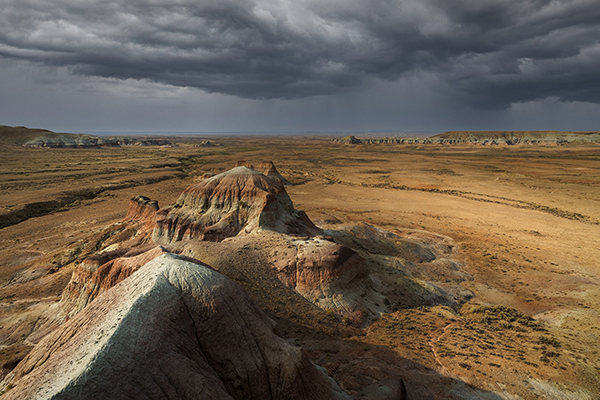
11-20mm (13mm), F/13, 1/30 sec. , ISO 64
Click image to view larger
Red Desert region, Honeycomb Buttes Wilderness Study Area, Wyoming
While traveling along on the Continental Divide looking south into the Great Divide Basin, I spotted this wonderful scene. It’s a vast landscape, and at 13mm I think I captured how large the area is. The foreground ridge leads your eye in toward the storm sweeping through.
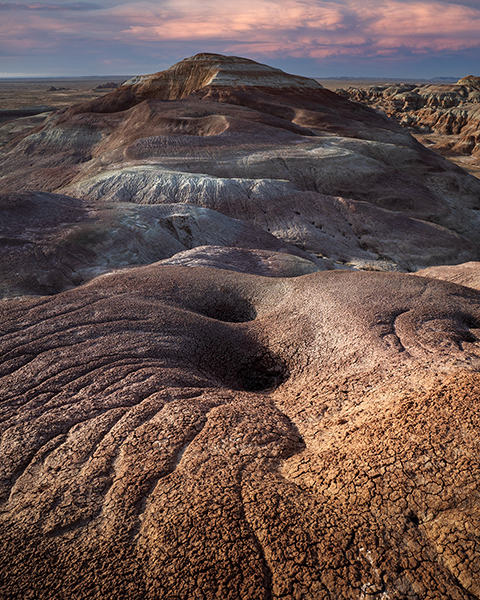
11-20mm (11mm), F/8, 1/160 sec. , ISO 200
Click image to view larger
Red Desert region, Honeycomb Buttes Wilderness Study Area, Wyoming
This photo was taken the same day as the first photo of the ridges. It was so bitterly cold that day, and the wind was awful. Having never been to this area of the WSA, everything was visually interesting, but this ridge really stood out. Those holes in the foreground that almost spiral like water erosion marks attracted my eye. Top it off with the layers of color and texture with some nice early morning light, and this image really encapsulates my style!
To see more of Brandon Ward’s photos, go to www.instagram.com/wyoutside.
More Photo Tips | Watch Videos | Learn More About Tamron Lenses | Photo Gallery
